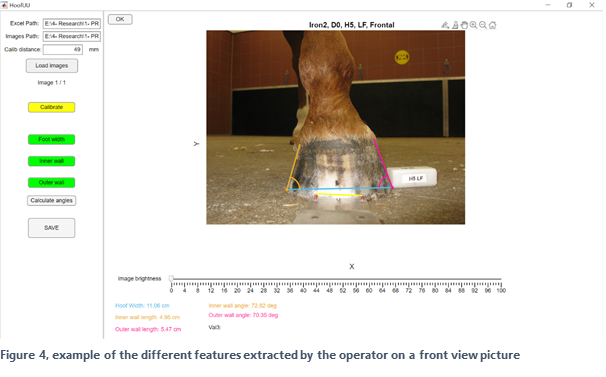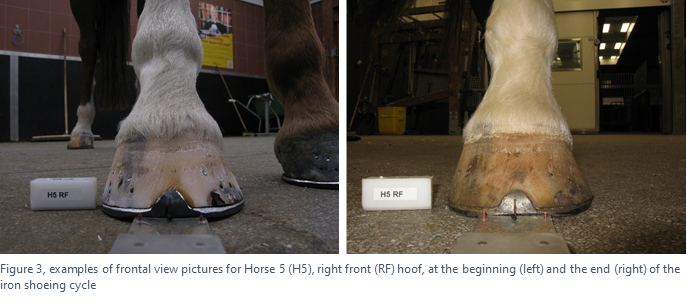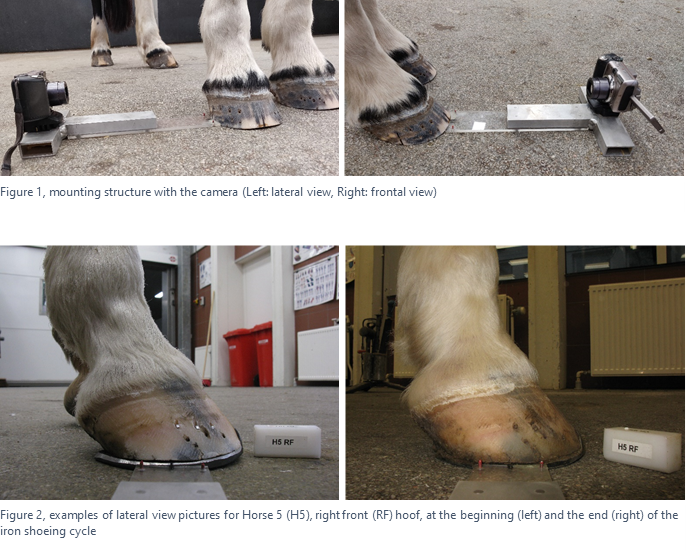No hoof, no horse: Image processing for hoof shape monitoring


Problem Statement:
Horses have been domesticated more than 5000 years ago for their locomotion abilities. They have first been used for farming, transportation or even wars but were replaced by machines after the industrial revolution. They are nowadays used mainly for leisure horseback riding, tourism and sport horseback riding, including the races industry and Olympic equestrian sports. The last two drew the attention towards equine welfare, performance and health prevention.
A way to improve equine performance or to prevent and treat orthopedic issues is to shoe horses properly, which is done by the farriers in close collaboration with the horse owner and the veterinarian. Their work is to properly balance the hoof through trimming, to make sure that the loads during locomotion will be evenly distributed under the hoof, and to properly shoe the horse to protect the hoof from excessive wear. It is also important to provide it with the best solution for its activity or rehabilitation program. 1
The University of Utrecht (UU) together with UT is working on the development of novel fully personalised 3D printed shoes, designed based on 3D scans of horse’s hooves. In order to quantify the effects of this novel shoes on the horse’s hooves and locomotion, and compare them to the classically used iron shoes, a long-term hoof and gait monitoring study is currently running at the UU. This study includes taking pictures of the horses’ front hooves once per week for 21 weeks in total.
The student’s work will be to provide the researchers with automated image processing tool and relevant features extraction for these pictures, as well as identify errors sources and quantify them.
Tasks:
Automation of hoof shape detection and dimensions calculations, quantification of the inter- and intra-operators differences, quantification of the errors induced by the camera mount misplacement
Work:
20% theory, 10% data collection, 50% development, 20% writing
Materials and Methods:
The study includes 6 horses. Each group of 2 horses underwent three cycles of shoeing (7 weeks each), including 2 cycles of iron shoes and 1 cycle of plastic shoes, in a randomised order.
Lateral and frontal views pictures of the front hooves were taken before and after trimming on bare foot condition (no shoes) at the beginning of the shoeing cycles and then once per week on shod condition (iron or plastic). Pictures were taken with a standard hand camera mounted on a T-shaped mount to ensure a constant distance between the hoof and the camera’s lens during the whole study (Figure 1). A calibration structure of know dimension was present on the camera mount.
Figures 2 and 3 show examples of obtained pictures. Figure 4 shows the application currently in use by the researchers, as well as some features already extracted on frontal view pictures.
Contact:
Jeanne Parmentier (j.i.m.parmentier@utwente.nl)

